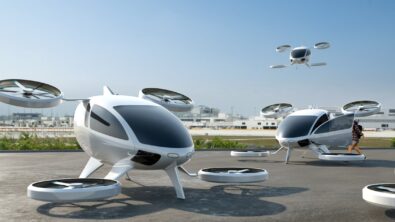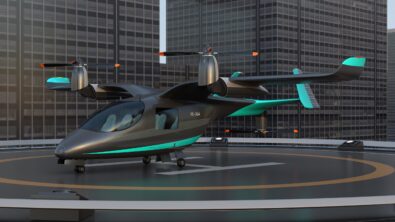Insights on AAM Autonomy from Automotive Part Two – Summary

One aspect of advanced air mobility (AAM)—a new classification of aircraft that can transform short range aerial transportation—is its potential for vehicle autonomy. Many companies working in AAM have plans to make their aircraft autonomous down the line, while some plan to make them capable of uncrewed flights immediately upon release. This would be an evolution of autopilot technology that already exists in the aviation industry today.
Of course, raising the level of autonomy in AAM vehicles is bound to raise new concerns and considerations during development, especially since companies would be creating flying computers in essence. This was a topic of discussion in the latest episode of Talking Aerospace Today featuring Todd Tuthill, Vice President of Aerospace and Defense for Siemens Digital Industries Software, is joined by Nand Kochhar, Vice President of Automotive and Transportation for Siemens Digital Industries Software.
Together, they talk about the rise in importance of cybersecurity for autonomous vehicles and the types of redundancies that should be integrated in AAM.
Computers on wheels (and rotors)
According to Nand, cybersecurity as become just as vital a factor in the automotive industry as more and more autonomous vehicles hit the market. Autonomous vehicles integrate electronics and software on a scale never seen in vehicles before, effectively turning them into computers on wheels. As with any computer, they can be vulnerable to cyberattacks, so Nand says companies would need to treat them as they would with traditional IT infrastructure and institute the proper safeguards into these new vehicles.
Autonomous AAM would be little different, only now you would have these computers in the sky rather than on the road. In this case, cybersecurity should be even more of a priority to AAM companies, as the consequences of an air taxi being compromised in the middle of a flight could be more severe than a car on the ground.
Safe and monitored fleet
One strategy that both Nand and Todd suggest is having a team of monitors to watch over AAM fleets. Nand describes how some vehicles at level 4 autonomy, where can be driven without any human intervention outside of emergencies, are remotely monitored by humans who can take if something goes wrong. This is typically reserved for vehicles who are providing a service to a city rather that private vehicles.
Todd says the same kind of system can be utilized for AAM fleets. In fact, it is already in the works. He mentions how this is the chosen strategy of Wisk, a company planning to use autonomous AAM from its debut, where they would have a human supervisor monitoring a small number of AAM vehicles. If something happens where the aircraft is compromised, the supervisor can step in and guide the aircraft to a safe location.
Redundancy for advanced autonomy
While this strategy would be a major step in increasing the safety of AAM, in order to truly guarantee safety, companies would need to implement redundancies for higher levels of autonomy. As mentioned before, the monitor strategy can be categorized under level 4 of autonomy since a human operator would step in for emergencies. However, Todd states how if that command and control link fails and the monitor is unable to connect to the aircraft, then the autonomy level of the aircraft increases to level 5.
Therefore, when companies are introducing redundancies into their AAM vehicles, they need to consider ones for an aircraft operating at full level 5 autonomy. Not only would this directly help keep their aircraft safe, but it would also make the certification process easier by having answers upfront on what the aircraft would do in a worst case scenario.
Autonomous flight would be a terrific feature of AAM vehicles. Of course, as with any aircraft, safety should be of the highest priority, especially if the aircraft in question is essentially a computer in the sky. Companies need to take adequate precautions, including cybersecurity protections, remote monitors, and further redundancies for advanced levels of autonomy, to ensure that when the AAM sector finally launches, it will do so only as a benefit to the public.
Stay tuned for future Talking Aerospace Today episodes on autonomy in AAM, as well as other challenges to the sector.
Siemens Digital Industries Software helps organizations of all sizes digitally transform using software, hardware and services from the Siemens Xcelerator business platform. Siemens’ software and the comprehensive digital twin enable companies to optimize their design, engineering and manufacturing processes to turn today’s ideas into the sustainable products of the future. From chips to entire systems, from product to process, across all industries. Siemens Digital Industries Software – Accelerating transformation.


